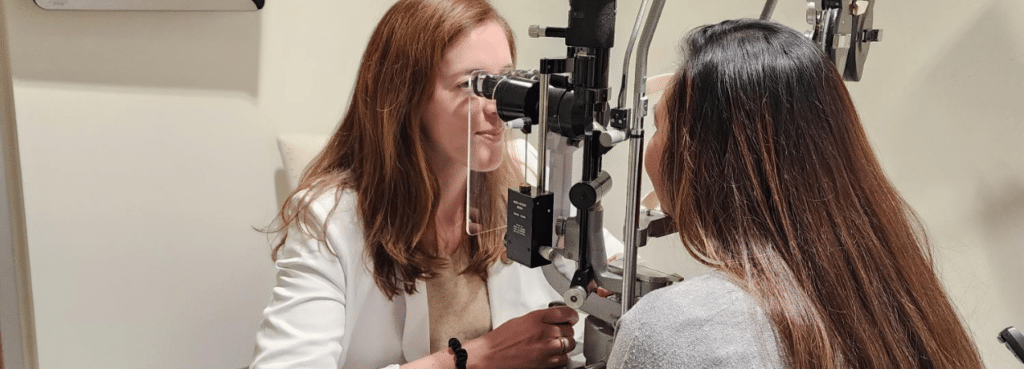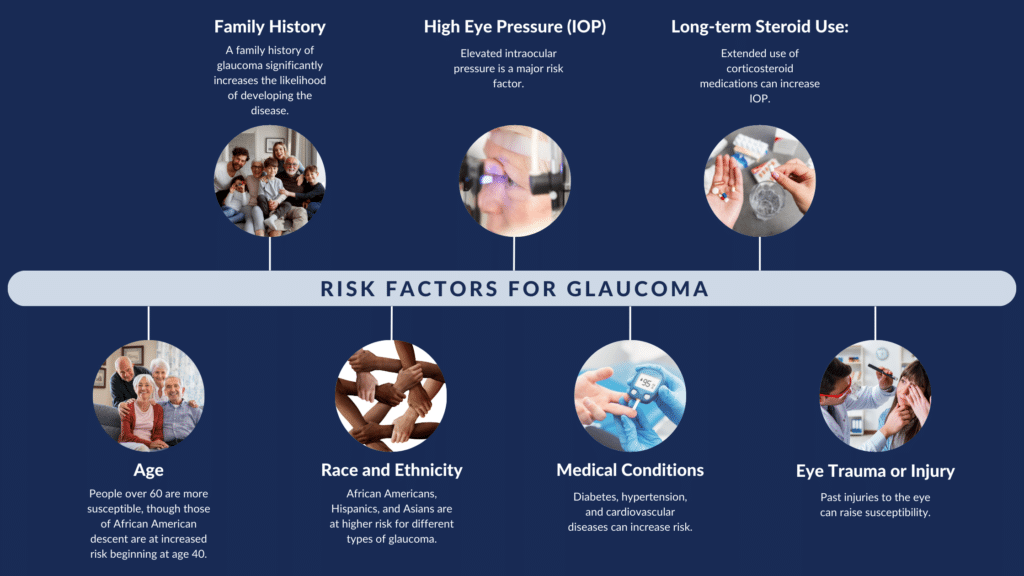Now Offering Free LASIK Consultations: Book Online Now!

As the new year begins, January marks a crucial time to focus on eye health with Glaucoma Awareness Month. This annual observance serves to educate and remind us about glaucoma, a condition that quietly affects the vision of millions worldwide.
Imagine a condition that could rob you of your sight without any early warning signs. That’s the harsh reality of glaucoma, often dubbed
the “silent thief of sight.” Many people with glaucoma aren’t aware they have it until significant vision loss has occurred.
In the United States, more than 3 million people are living with glaucoma. Globally, it is a leading cause of irreversible blindness.
Shockingly, about 50% of those with glaucoma are unaware of their condition because it initially presents no symptoms.
What Is Glaucoma?
Glaucoma refers to a group of eye conditions that damage the optic nerve, often due to increased pressure within the eye (intraocular pressure or IOP). The optic nerve transmits visual information to the brain, and damage to it can result in vision loss or blindness. Glaucoma develops gradually and typically starts with peripheral vision loss before affecting central vision.
Risk Factors for Glaucoma

Spotting the Early Signs
While glaucoma can be sneaky, there are some subtle signs to watch for:
- Gradual loss of peripheral vision, often in both eyes: This is typically the earliest sign of glaucoma. You might notice that you can’t see objects out of the corner of your eye as well as you used to. Over time, this peripheral vision loss can worsen, leading to tunnel vision. But keep in mind that Subtle visual field loss is only measured through testing at your eye doctor’s office.
- Tunnel vision in advanced stages: As the disease progresses, the field of vision narrows significantly, creating a “tunnel” effect where you can only see straight ahead. This can make everyday activities like driving or walking in crowded spaces difficult.
- Severe eye pain and nausea (in acute angle-closure glaucoma): This form of glaucoma can develop suddenly and is a medical emergency. You might experience intense eye pain, headache, nausea, and even vomiting. Vision can become blurry, and halos around lights may appear.
Because these signs can be easy to overlook or attributed to aging, regular comprehensive eye exams are crucial.
How is Glaucoma Treated?
While glaucoma cannot be cured, early intervention and effective management can significantly slow or prevent vision loss. The primary goal of treatment is to lower intraocular pressure (IOP). Here are the main treatment options:
Medications
- Prescription Eye Drops: Prostaglandin analogs or beta-blockers are commonly prescribed to reduce IOP.
- Combination Drops: In more severe cases, multiple medications may be combined for better IOP control.
Laser Treatments
- Selective Laser Trabeculoplasty (SLT): A non-invasive procedure that enhances fluid drainage from the eye.
- Laser Iridotomy: Specifically for angle-closure glaucoma, this procedure creates a small opening in the iris to improve fluid flow.
Surgery
- Trabeculectomy: This surgical procedure creates a new drainage pathway for excess fluid.
- Glaucoma Drainage Devices: Tiny shunts are implanted to help drain fluid and lower IOP.
- iDose: An implantable drug delivery system that provides sustained IOP reduction by slowly releasing medication over months or even years, reducing the need for daily eye drops and improving adherence.
- MIGS (Minimally Invasive Glaucoma Surgery): Techniques like the iStent or Hydrus Microstent offer less invasive options for patients with mild to moderate glaucoma.
Lifestyle Modifications
- Healthy Diet and Regular Exercise: Maintaining overall health through diet and exercise can help manage risk factors associated with glaucoma.
This Glaucoma Awareness Month, take a proactive step towards protecting your vision. Schedule a comprehensive eye exam to catch any signs of glaucoma early. Call us today at (858) 766-5606 or click here to book your appointment and ensure your eyes are in good health. Don’t let the “silent thief of sight” take away your vision. Early detection and treatment can make all the difference. Let’s make 2025 the year of clearer vision for everyone.








